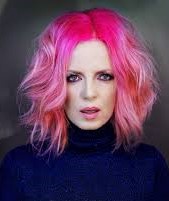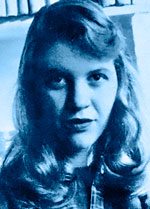Famous People with BDD
These celebrities have shared their struggles with appearance anxiety and Body Dysmorphic Disorder (BDD)

Lili Reinhart
Start of T.V. show Riverdale, Lili has spoken publicly about her struggles with BDD.
“The first time I got acne, I was in seventh grade and it made me develop a form of body dysmorphic disorder. Actually, there is a specific kind of BDD associated with acne. Every time I have a big cystic pimple or something, it very much triggers that part of me where I don’t want to look at myself in the mirror. It’s hard to take pictures of myself, I don’t want to go out in public, and I want to hide my face.”
“I feel so self-conscious — like the whole world is looking at my bad skin,” she said. “I’ve definitely not gone out of the house because of a breakout, which is horrible.”

Reid Ewing
Reid Ewing the actor from Modern Family has been open about having suffered from BDD for years. He has undergone many cosmetic surgeries but has never been satisfied with the results. When he first moved to LA, he admitted that all he wanted to do was sit in his apartment and take photos of himself from every angle. His first surgery was at age 19 for a cheek implantation that he describes as leaving his cheeks “as hollow as a corpse’s.” He then had multiple surgeries to fix the problems that he believed the initially surgery had caused. He now believes the surgeries were unethical and ineffective. He said, “I genuinely believed if I had one operation I would suddenly look like Brad Pitt”.

Robert Pattinson
Robert Pattinson, an actor who rose to fame through the Twilight movies has revealed his experiences of BDD:
‘Body dysmorphia, overall tremendous anxiety. I suppose it’s because of these tremendous insecurities that I never found a way to become egotistical. I don’t have a six-pack and I hate going to the gym. I’ve been like that my whole life. I never want to take my shirt off.”

Shirley Manson
Shirley Manson, the lead singer in the pop group Garbage, states in a magazine interview that she had a history of BDD:
“I always turned up five hours late because I’d be fussing about my hair and make-up. I would change into a million different outfits, and make them change the lighting a million times, I would spend two hours crying in the toilet – and whatever the result, I always thought I looked disgusting. I would look in the mirror every morning and be upset. I would get dressed and look in the mirror again, and be upset. It could be anything; I could be too fat, too thin, too flat chested. My hands were not long enough, my neck was too long. My tummy stuck out, my bum was too big… It was driving me crazy and I was wasting energy – precious energy – that I should have been putting into my music or my family or friends”.

Michael Jackson
Michael Jackson (1958-2009) probably had BDD (as well as many other emotional problems). He is famously known for his extra-ordinary amount of cosmetic surgery (and indeed denial of having had cosmetic surgery.)
He had had an abusive childhood from his father who repeatedly called him ugly and he suffered from acute acne as a teenager. In latter years, he led an isolated life and repeatedly covered his face using a surgical mask when out in public.

Andy Warhol
Andy Warhol (1928-1987) may have had BDD. The pop artist, who put Campbell soup cans and coloured photographs of Marilyn Monroe in museums, was very self-conscious and preoccupied by “redness” on his nose.
In his autobiography (Warhol, 1975) he reveals, “I believe in low lights and trick mirrors. A person is entitled to the lighting they need.” (p.51). “At one time, the way my nose looked really bothered me – it’s always red – and I decided that I wanted to have it sanded… I went to see the doctor and I think he thought he’d humour me, so he sanded it and when I walked out of St Luke’s Hospital, I was the same underneath but had a bandage on” (p.63). “If I didn’t want to look so bad, I would want to look plain. That would be my next choice” (p.69).
Carl Withers, who became his lover in 1952, confirmed in an interview “he was incredibly self-conscious and had such a low opinion of his looks; it was a serious psychological block with him.” His concern with his nose is reflected in one of his early works “Before and After”, which is an advertisement for a rhinoplasty and can be seen in the Metropolitan Museum of Art in New York.

Franz Kafka
Franz Kafka (1883–1924), author of Metamorphosis, may have had BDD. His diaries tell us how he hated himself and his appearance:
“I didn’t want any new clothes at all; because if I had to look ugly anyway, I wanted to at least be comfortable. I let the awful clothes affect even my posture, walked around with my back bowed, my shoulders drooping, my hands and arms all over the place. I was afraid of mirrors, because they showed an inescapable ugliness” (Brod, 1995).

Sylvia Plath
Sylvia Plath (1932–63), the poet and novelist, is well known to have had depression and indeed committed suicide. However less well investigated is whether she might have had BDD. She was an attractive woman, but in her autobiography, Plath (2000) wrote:
“My face I know not. One day ugly as a frog the mirror blurts it back: thick-pored skin, coarse as sieve, exuding soft spots of pus, points of dirt, hard kernels of impurity – a coarse grating. No milk-drawn silk. Hair blued with oil-slick, nose crusted with hair and green or brown crusts. Eye-whites yellowed, corners crusted, ears a whorl of soft wax” (p. 306).
And later: “I shiver, chilled, the grave-chill against the simple heat of my flesh: how did I get to be thick big, complete self, with the long-boned span of arm & leg, the scarred imperfect skin?” (p. 328).
Please support our work today
Together, we can relieve suffering for people with BDD, while advancing research, treatments and awareness of the condition.
